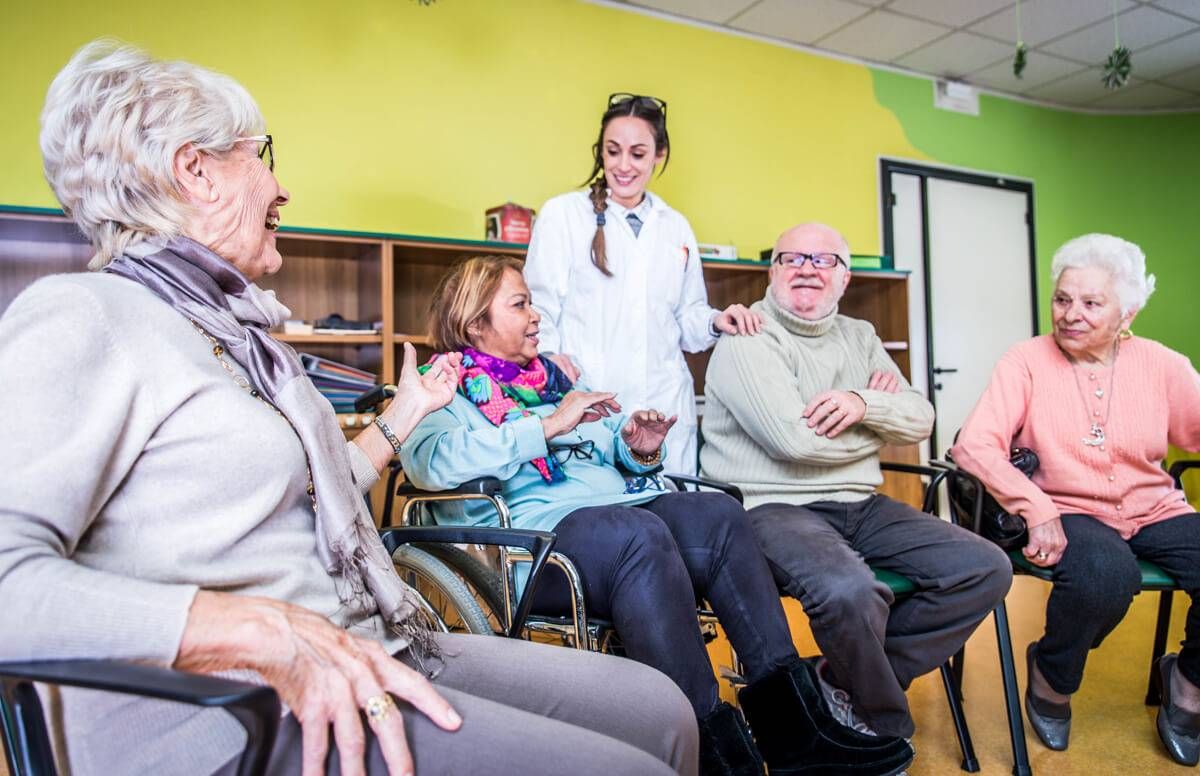Creating Masterpieces Through Community-Centered Living
The head of an innovative assisted living community describes a new model
The philosophy of community-centered living brings together important principles of social interaction that not only combat isolation for all ages but can also lead to a paradigm shift in how we care for and interact with each other. This shift can then lead to the elimination of institutional thinking and design.

When we separate our elders, or any age group, we prevent the human connections that need to take place in all our personal journeys. These personal journeys do not end when we move into any type of residential community, from nursing homes to independent housing. Isolation and institutional thinking begin at the front door of any place in which the focus shifts from the community to only those who live inside those doors.
The senior housing industry has an obligation to promote community-centered living because social isolation is unhealthy. Successful community-centered living involves establishing a residential setting that is welcoming to all ages, that encourages autonomy for all ages and that expands the opportunities for the involvement of all ages.
What Does Community-Centered Living Look Like?
To implement community-centered living, it is important to create an environment that is welcoming to all ages. It starts with the elimination of institutional design, a medical model that is structured and hospital-like, leading to deficits in social experiences. It calls for a shift toward generous common space in which the entire community can gather. By bringing all ages together in any residential setting, we can break down social isolation, creating a healthier housing model for all.
Once a welcoming and residential setting is in place, everyone must be encouraged to take responsibility to choose to gather in these healthy settings. The success of the community-centered living starts by tapping into the many different interests and needs of all ages in the community. If the setting for gathering is welcoming and the choices for gathering are plentiful, then the natural next step is the promotion of autonomy for all — being empowered to choose a possible human connection.
When everyone is allowed and encouraged to choose from a smorgasbord of hobbies, clubs, lectures and programming, then the final principle of maintaining and enhancing our lifestyle starts to occur. Community-centered living encourages an active continuance of our own personal journeys that can continue to shape us as we age.
Changing the Housing Industry
Why do we at The Scandinavian Living Center in Newton, Mass., feel that community-centered living can change an entire housing industry? By gathering people in the best settings — such as an updated and spacious nursing home or assisted living residence, for example, we are bringing thousands of potential consumers together to experience a more meaningful way to connect.
The Scandinavian Living Center implemented the philosophy of community-centered living when it opened in 2001. Even though it is a small 40-apartment traditional assisted-living residence, every month over 2,000 visitors (not counting the family and friends of residents) walk through the front door to experience our community.
This is made possible because more than 30 organizations utilize our place as their headquarters. In addition, there is a Scandinavian Cultural Center, a Scandinavian Library with a Pop-up Cafe that is open on Saturdays and an Outpatient Physical Therapy Clinic that treats clients of all ages, including one as young as 8 years old.
Think about the powerful possibilities:
Over 2,000 sets of eyes observing a residence for seniors that is not isolated from the town.
Over 2,000 people correcting their misconception of elder housing being isolated from their neighborhood.
Over 2,000 potential consumers who begin to demand better and more community-connected housing options.
Over 2,000 people a month who realize that they want more than a safe place to sleep at night — they want to stay connected and continue their journey in life until the day they die.
The Michelangelo Effect
During a recent radio interview where we were discussing beautiful residences, isolated from the neighborhood and community, the host stated that when a residence is isolated from the public, “only God can see what is going on inside” and I added, “this includes the isolated residents, too.”
His comment stuck with me, and I later remembered a story I heard about Michelangelo when he was painting the Sistine Chapel. In one area of the ceiling that no one would see, he spent days making sure it was perfect. When asked why he was wasting his time, he replied, “God’s eyes can see it.” Well, we are not Michelangelo, but the flow of neighbors gathering in all our places means that thousands of eyes see us, and naturally we want to put our best foot forward.
The powerful result is that we are given the opportunity to become “little Michelangelos,” allowing us to create our own masterpieces for the entire community to enjoy.

